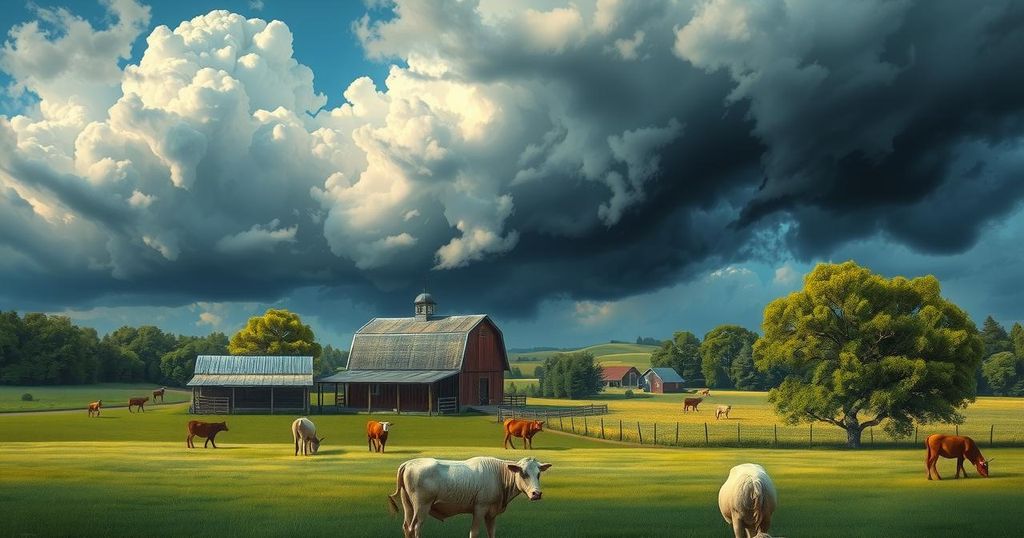- The fight for freedom often requires demands rather than gifts.
- Orwell’s Animal Farm serves as an allegory for current political climates.
- Social media has transformed how protests are organized worldwide.
- Frustration with mainstream media has led to public skepticism.
- There’s a growing political vacuum leading to grassroots movements.
The Legacy of Animal Farm’s Allegory on Society
As history has shown, the fight for freedom and equality is rarely gifted; it’s demanded. Abdulai Mansaray expressed this sentiment in a recent editorial reflecting on George Orwell’s classic, Animal Farm. The allegorical tale highlights the journey of farm animals who, fed up with their oppressive owner, Mr. Jones, sought to create an equitable society where the fruits of their labor were to be shared among all.
Modern Protests: Patterns Emerging Worldwide
Orwell’s 1945 text served as a critique of Communist Russia, under the reign of Josef Stalin. His insights reveal how power corrupts even the most noble intentions, illustrating a pattern that remains relevant today. In many ways, the narrative resonates with today’s socio-political climate, where promises of change often morph into the status quo, much to the dissatisfaction of the populace.
Social Media: Changing the Game for Activism
In recent years, the frequency of protests, across continents from the USA to Europe and Africa, has become strikingly prevalent. This surge can be attributed to several factors, with social media playing a pivotal role in mobilizing dissent. No longer is the dissemination of information monopolized by elite media; now, anyone can become a voice for change, sharing narratives that diverge from mainstream portrayals.
Shifting Public Trust in Media Narratives
The proliferation of electronic communication allows masses to rally against perceived injustices almost instantaneously. Trust in traditional news sources has been shaken, as many see the mainstream media as complicit with official narratives. Public sentiment suggests skepticism often drives people towards alternative sources, raising questions about truth and manipulation in news media—a conversation that continues to grow, especially in light of events like recent protests in Hungary and Israel.
Political Vacuum and the Rise of Grassroots Movements
The disconnect between political leaders and the electorate is palpable. In countries like the USA, public frustration is directed at the Democratic Party, perceived by many as ineffective against the damaging policies of recent administrations. This perception has opened a door for grassroots movements, indicating a potential rise of independent forces in the political landscape as people seek options beyond two-party systems that feel increasingly irrelevant.
Historical Echoes of Revolutions in Today’s Climate
Take the mayoral race in New York: the emergence of candidates like Zohran Mamdani underscores a broader desire for representation that challenges conventional political hierarchies. Furthermore, as we reflect on historical revolutions, echoes of the American and French revolutions resurface, amplifying questions regarding the levels of dissatisfaction today. The public’s increased willingness to protest against perceived government failures indicates a brewing appetite for radical change.
Are We Approaching Another Revolutionary Tide?
It’s crucial to remember the underlying causes driving mass discontent. Historically, revolutions have sprung from grassroots dissatisfaction with systemic issues like over taxation and lack of representation. Now, with an economic climate riddled with rising costs of living and perceived injustices against marginalized communities, some are beginning to ask if we are once again on the brink of revolution.
Increasing Demonstrations Reflecting Global Unrest
Examples of recent protests highlight a growing unrest: In Kenya, fatal clashes during anti-government demonstrations illustrate the desperate frustration gripping parts of Africa. Meanwhile, in Hungary, massive crowds marched against oppression, defying governmental authority. Such events underline the increasing urgency of protests worldwide, suggesting that movements may no longer be centralized under traditional party lines but rather from independent factions challenging your status quo.
The Winds of Change in Political Engagement
All these elements coalesce to create a tempest—whether or not it will actually lead to significant political change remains to be seen. As we observe the world, the rapid pace of protests and political dissidence might signify an evolving landscape where older political frameworks struggle to keep pace. With citizen engagement rapidly evolving and independence drawing attention, perhaps we are witnessing a new political awakening.
In a world where discontent is manifesting through an array of protests, the dynamics of political engagement are shifting. Orwellian themes of confusion and betrayal persist, as the lines blur between leaders and followers. Whether this will culminate in significant change or remain a fleeting tempest continues to be the question.






